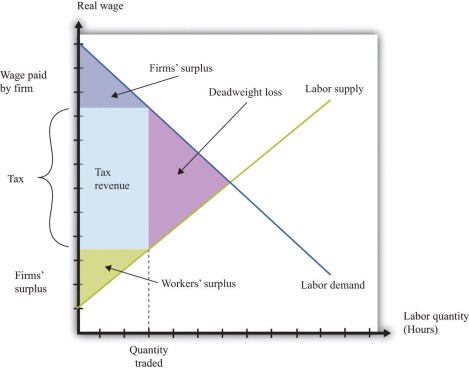For those seeking to read the article and similar articles by Dr. Schramm first please see the following link: http://www.forbes.com/sites/carlschramm/2013/02/26/by-forgetting-its-proud-economic-history-syracuse-loses-its-future/#439eba577525

Downtown Syracuse NY, taken from modern day Clinton Square where the Erie Canal once ran through.
Generally I tend to focus my writing on national or international economic conditions but as a native Syracusan, Syracuse University alum, and now PhD student, I felt I had to add to this debate no matter how old. University Professor Dr. Carl Schramm has written a number of articles regarding Syracuse and city economic plans in general to which I would like to respond.
Firstly, for those who believe I am writing merely to defend Syracuse and all of its nostalgia, you will be sadly mistaken. There are a number of parasitic problems, both economic and social, that are undeniable and which must be addressed. Much of the original backlash centered around counter arguments to Dr. Schramm’s assessment of the city’s social and economic status. On the contrary, I actually happen to agree with a number of his evaluations. I also happen to agree, from a high-level perspective, that these problems must be “self owned”, and that indigenous entrepreneurial activity serves an important role in the solution set.
That being said, the political economic direction suggested and public policy philosophy offered appear chained to a flawed economic ideology made popular some 35 years ago and which remains unproven until today.
In fact, while we agree on some aspects of the problems and solutions, my primary motive for writing this article is to offer a substantially different methodology to cultivate entrepreneurial activity, and economic and political philosophy to overcome the challenges the city is currently facing.
One element of Dr. Schramm’s investigation which cannot be ignored is that Syracuse and its economy do not operate in an isolated bubble from the rest of the World. We cannot hastily conclude that any downturn is the sole result of actions taken within the community. The reason similar situations can be noticed throughout the country is because of national and international economic effects which strongly helped to catalyze this trend. While past and present local leaders were in no doubt partly responsible and will be required to take the lead on revitalizing the area, it is both unfair and misleading to suggest that the responsibility of the economic decline lies solely upon their shoulders.
In the follow up article “Syracuse Can Rise Again, But Only If The Entrepreneurs Return” Schramm claims that “… Because of the tax and regulatory environment — and no one can avert his or her eyes to the comparative disadvantage this presents — few migrating firms will find the city attractive.” This is a very broad assertion with little to no empirical backing. Different tax structures: corporate taxes, self employment taxes, payroll taxes, real estate taxes, income taxes, etc. are likely to all affect entrepreneurial activity differently. The same can be said of regulations: environmental, infrastructure, finance, human resource, business formation, etc. Many of these factors have not been fundamentally proven to have a correlation to entrepreneurial activity let alone be proven to be the primary motivator. If the broad claim that any regulation and any tax had an all but certain substantial negative impact then Silicon Valley, one of the highest taxed and regulated parts of the country, would not be the entrepreneurial engine that it is today.
Later in the article it is stated that “Government’s most effective role is to encourage with economic signals such as reducing local regulatory burdens (licensing, zoning and inspections), lowering property taxes, providing grace periods from labor law that might not be applicable to start-up businesses, and providing only the infrastructure that emerging businesses, not imaginary “ideal” businesses, need. Simply, “backing off” is likely a more effective strategy than trying to force economic growth according to some expert’s playbook.” When discussing the government’s economic role, let us not forget that governments are burdened with a very broad set of responsibilities and tasks. Laws, regulations, and taxes are not in themselves bad concepts by any means. In fact, theoretically they should be put in place because they contribute to the overall public good. In some instances however, the strife with government actions is surely justified. While the results of NY’s Buffalo Billion remain to be seen, taking into account all NYS incentives received and the revised job outlook provided by Solar City, the project is set to result in ~$1.4Million/job created. This is hardly what a rational individual would consider an efficient use of tax payer funds, but by no means is the project representative of all government actions or an indication that government is inherently obstructive or nefarious.
The notion that the best that government can do is to reduce regulations, cut taxes (an implicitly cut services) and then hope for the best, today remains an unfounded fallacy made famous primarily in the 1980’s. Many will of course object to this assertion and will undoubtedly rebut with poignancy by highlighting some particular time period or location as proof of this philosophy’s legitimacy. I would like to remind readers however that while pointing to a counterexample can be enough to disprove a claim, it is not in itself enough to prove a theory or in fact prove causality. To truly prove causality is all together a different animal as any academic or researcher will attest. This requires profound insight and necessitates substantial evidence linking economic conditions to the outcome they’ve produced. Simply citing their coexistence within the same society and time period is no more a proof of causality than is linking breast cancer to traffic accidents.
In a subsequent but related article “It’s Time For City Planners To Adapt A New Model” Dr. Schramm speaks of city planners not considering the most important metrics such as: poverty ratio, city population, or the costs of public services. I very much agree with him that cities cannot create an effective strategic plan without considering their main goals, objectives and governing philosophy and it would be rash to do so. That said, Dr. Schramm provides no true underlying philosophical goals for society in his confutation of city planning strategies other than to suggest a vague notion of prosperity, by no means a well-established and objective measure.
In contrast, I offer readers the Society Success Metrics outlined in my article “GDP vs. True Societal Success” where the goals and metrics extend beyond pure economic growth to more fundamental and intrinsic objectives. Taking these measures into account, one can begin to utilize peer reviewed research, as it was intended, to guide the decisions and proposals for government to enact thus providing a substantially increased likelihood of achieving those targets.
As an example of this philosophy in action, if one were to set goals for the city’s education system, they would be wise to consider the existing research and best practices available through education journals (such as AERA) or alternative educational systems such as the Finnish National Educational System. Clearly local governments are handicapped in their authority to make decisions on this subject, but the perspective for improvement is nevertheless valid however small the potential impact may be. Before anyone jumps to any conclusions on cost by the way, in 2012 according to the National Center for Education Statistics Finland spent $9,353/student and the US spent $11,732/student, while Finland’s students are both healthier and perform better in just about every measurable way.
In relation to entrepreneurship, one policy concept which has proven to have a definitive and positive correlation to entrepreneurial activity is education. Government can be supportive of entrepreneurial activity through entrepreneurship coaching and education programs, R&D support systems, social capital (i.e. networks), etc. KCSourelink in partnership with the University of Missouri has offered a “resource rail” specifically laying out various trajectories and resources available to entrepreneurs through their local community. As I have no intention of turning what is already a lengthy article into a manifesto however, I’ll keep any further explicit suggestions of pragmatism for another day.
The key takeaway here is to recognize not solely the limitations of government but the power of government as well. More so, that impact does not necessarily have to be negative or obstructive. There are proven methods and best practices which can be taken from other regions, nations, and especially from research which can be implemented and tried in Syracuse as well. If we are in fact going to try and stimulate entrepreneurial activity, does it not then follow to have a bit of an entrepreneurial mindset with our creation and trial of policy? One can never claim to have a silver bullet to success by any measure, but utilizing reasoned and proven methods appears to me a far more effective strategy than going to the casino and rolling the dice.
References:
Schramm, Carl. “Syracuse Can Rise Again, But Only If The Entrepreneurs Return.” Forbes. Forbes Magazine, 4 Mar. 2013. Web
Schramm, Carl. “By Forgetting Its Proud Economic History, Syracuse Loses Its Future.” Forbes. Forbes Magazine, 26 Feb. 2013. Web.
Schramm, Carl. “It’s Time For City Planners To Adapt A New Model.”Forbes. Forbes Magazine, 14 May 2013. Web.
KCSOURCELINK RESOURCE RAIL. Digital image. KCSource. KCSource, n.d. Web.
Cope, Jason, and Luke Pittaway. “Entrepreneurship Education A Systematic Review of the Evidence.” International Small Business Journal 25 (2007): 479-510. Web.
American Educational Research Association. AERA, n.d. Web. 08 June 2016.
“Education System.” Oph.fi/. The Finnish National Board of Education, n.d. Web. 08 June 2016.
“Gross Domestic Product per Capita and Public and Private Education Expenditures per Full-time-equivalent (FTE) Student, by Level of Education and Country: Selected Years, 2005 through 2012.” National Center for Education Statistics. NCES.ed.gov, n.d. Web.


